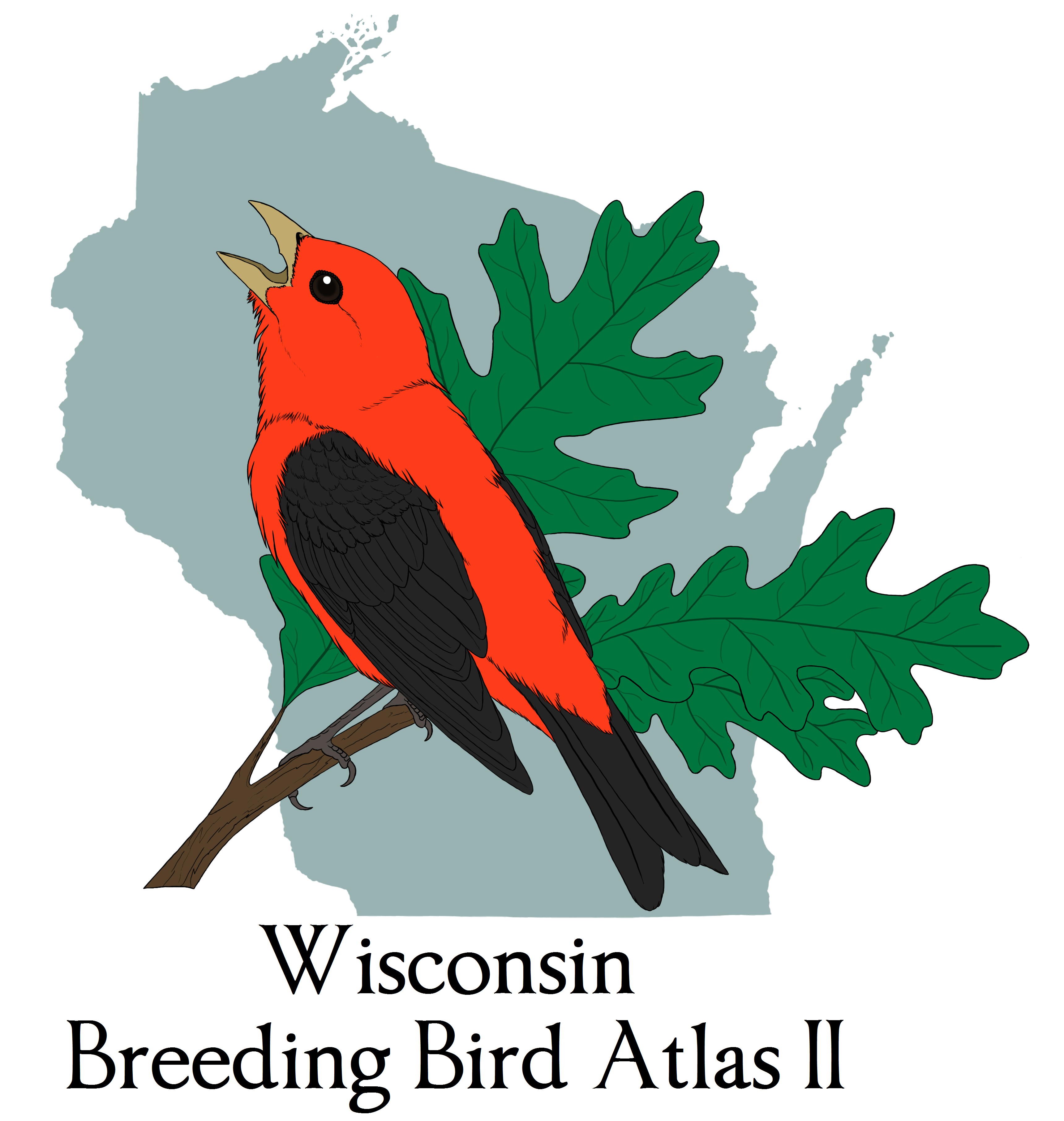-By Carrie Becker-
(WBBA II Communications Chair)
As we welcome 2019, organizers of the 2nd Wisconsin Breeding Bird Atlas are looking ahead with urgency to the final breeding season of the five-year survey. It’s now or never to finish this project!
To kick off the upcoming season of data collection, birders from around the state will gather April 5–7 at the Holiday Inn & Convention Center in Stevens Point for a weekend of field trips, training for both established atlasers and newcomers, eBird workshops and tips from the experts. It also will be an opportunity to set personal strategies on how and where volunteers can best help the project finish its field work in 2019.
Advance registration for $30 (which includes breakfasts, snacks, Saturday lunch, all sessions and field trips) must be completed by March 15, though walk-ins are welcome for $40. Agenda and full registration details can be found on Pages 17-19 of this newsletter and at https://wsobirds.org/atlas-2019-kickoff.
The meeting’s keynote speaker will be Ian Davies, eBird project coordinator with the Cornell Lab of Ornithology. Davies will address atlasing in the era of eBird, and how Wisconsin has paved the way for the next generation of atlases being conducted through eBird, such as Virginia, Maine and the forthcoming efforts in New York and even New Zealand. Davies is one of the “Big 4” coordinators at eBird, and you may also recognize his name from the 700,000+ warbler day he recorded in Quebec last spring.
“More records were gathered in the first year of WBBA II than in the entirety of WBBA I. Having eBird Mobile on a phone to atlas in real-time has made data collection a part of your normal birding,” Davies said. “Real-time feedback on progress for blocks and species through eBird tools has made it easier than ever to focus efforts where they’re needed.”
Seventeen other presentations will be offered, beginning with an optional “Atlasing 101” session on Friday afternoon, and running through noon on Sunday. Topics range from an overview of project results to date, how-to tips for uncovering secretive species, and a Q&A session. A Birds & Beers social event at Central Waters Brewpub and morning and nocturnal field trips to look for species like Prairie-Chickens and Snowy Owls will round out the weekend.
As the project heads into its final season, strategies on when and where to Atlas will underpin many topics. A job-fair style session will put county coordinators at tables by region to help match atlasers with the right blocks that need surveying.
“The biggest remaining gaps are in northern and western Wisconsin, but there are still opportunities in every area of the state to help,” said Nick Anich, atlas coordinator and a DNR conservation biologist. “The kickoff is a great time for motivated atlasers to meet with county coordinators so we can all strategize on how to efficiently finish the remaining blocks.”
Building upon Atlas I (1995-2000), WBBA II is a five-year volunteer-driven effort to survey the distribution and abundance of the state’s breeding birds. Volunteers enter breeding bird activity through the Atlas eBird website, a custom tool developed by Cornell. When complete, project data will be published in a hard-copy book and online.
Since the project started in 2015, more than 1,800 birders statewide have documented more than 6.6 million birds of 242 species.
“Our April kickoff meeting is a great way to learn more if you are new to the Atlas and a great way to get questions answered if you already have participated,” said William Mueller, director of the Western Great Lakes Bird and Bat Observatory, one of the groups leading the Atlas effort along with WSO, the DNR and the Wisconsin Bird Conservation Initiative.
“People will be able to fine-tune their knowledge in preparation for our final year of the survey,” Mueller said.


